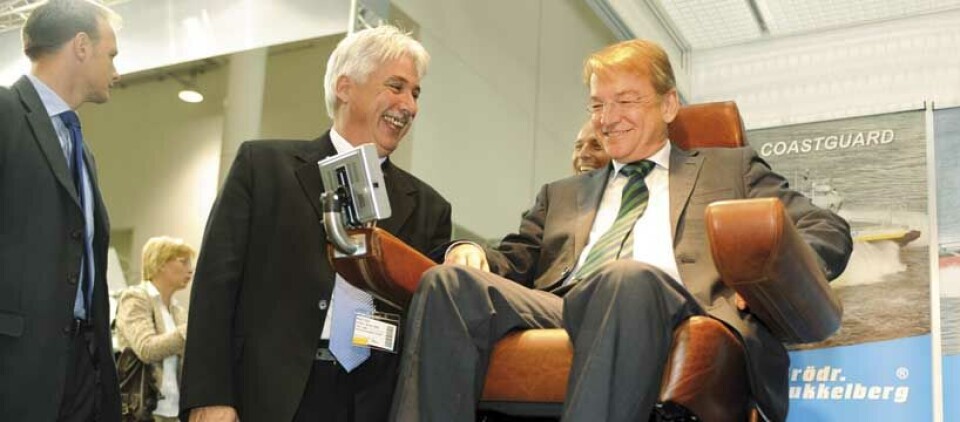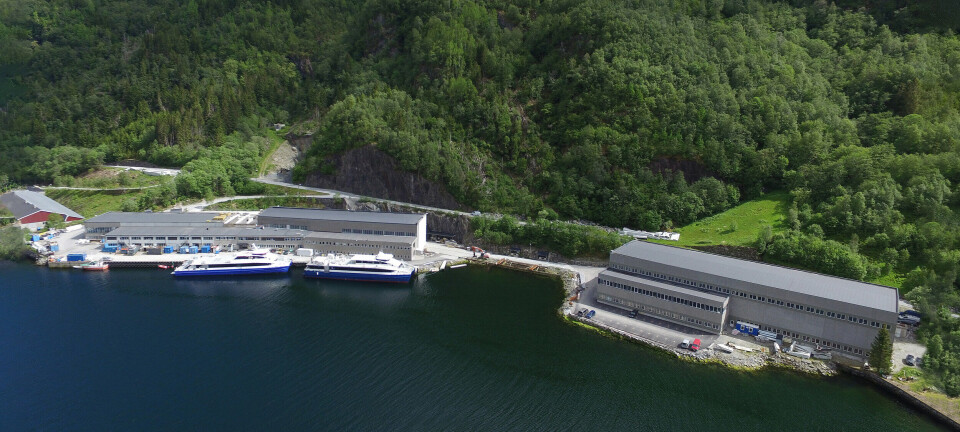
Many international participants at the exhibition
The exhibition companies – a total of more than 60 – played a major role in the success of MS&D. They showed innovations in naval ship building, in defence and surveillance technology, and methods and equipment for repulsing pirates. The exhibitors, including leading shipyards and maritime equipment suppliers, agreed that the quality of visitors was very high.
Denne artikkelen er tre år eller eldre.
Werner Lundt, Executive Director of the German Shipbuilding and Ocean Industries Association (VSM), welcomed the fact that “that establishment of the new conference and exhibition MS&D in Hamburg has worked out so well. Alongside SMM, MS&D is an outstanding platform for the German ship building industry to demonstrate its absolute high-tech expertise in the defence sector, too.”
Shipyards and maritime equipment suppliers from Germany, Norway, Italy and other countries made good use of MS&D to make new contacts. TKMS had an outstanding eye catcher in the form of a model helicopter carrier, but mostly smaller units were in demand, in many cases by Gulf States, including Bahrain, for defence of their oil platforms.
Lürssen was highly satisfied with the response. “MS&D was a positive event in every respect. The most important thing for us was the quality of discussions with the right people,” said Jörg Ahrens, Sales Manager at Lürssen Werft, which has the skills needed in both yacht building and naval ship building. The same experience was reported by Øystein Hukkelberg, Project Manager with the Norwegian company Gazelle, a specialist in construction of fast aluminum hulled boats – “We had a number of inquiries for our boats, and obtained some promising new business leads.” Osvaldo Facchinetti, the Director responsible for business development at Intermarine, an Italian shipyard making smaller naval vessels, mine countermeasure vessels and patrol boats, felt that it was important to “fly the flag at MS&D.”
A number of companies used MS&D for their first public presentation of new developments. Thus VFR Marine Service showed their new slippery gel, developed specially for use on merchant ships to repel pirate attacks. The red-coloured gel is mixed with water and sprayed on the pirate boats by means of water cannon. The result is that the attackers completely lose any grip. Christoph Kiese, Senior Manger Maintenance Service at VFR, was delighted with visitor response – “We had 15 or 20 shipowners at our stand, and have already received indications that orders will be placed.”
Similar interest on the part of shipowners was also reported by Ralf Lange, Sales Manager at Jabsco GmbH, in the Long Range Acoustic Devices (LRAD), also known as sonic cannon, developed by the US company American Technology Corporation. These devices serve to warn and repulse pirates by means of sound waves.
There were plenty of visitors at the Carl Zeiss Optronics stand. Their new thermal imaging system permits high-precision detection of approaching pirates, even in extreme darkness. Project Manager Gerhard Richter indicated that he had met with interest by a number of shipowners.
Suppliers of defence systems and new unmanned aerial vehicles were favourite stands for naval delegations. Grischka Düppe, Head of Research and Development at the Centre for Functional Materials (ZfW), a non-profit company associated with the Technical University of Clausthal-Zellerfeld, enthused “We had exactly the right audience, with the naval attachés and delegations.” The main focus was on the new helicopter drone, which can undertake fully automated surveillance flights.
A few steps away, at Diehl BGT Defence GmbH & Co. KG, visitors were able to compare the ZfW drone with the CamCopter, a helicopter system which is likewise unmanned and is fitted with sensors. Dr. Jörg Brechtefeld, responsible at Diehl for external relations with navies, indicated that MS&D “has made a successful start, with good potential for further progress.”











